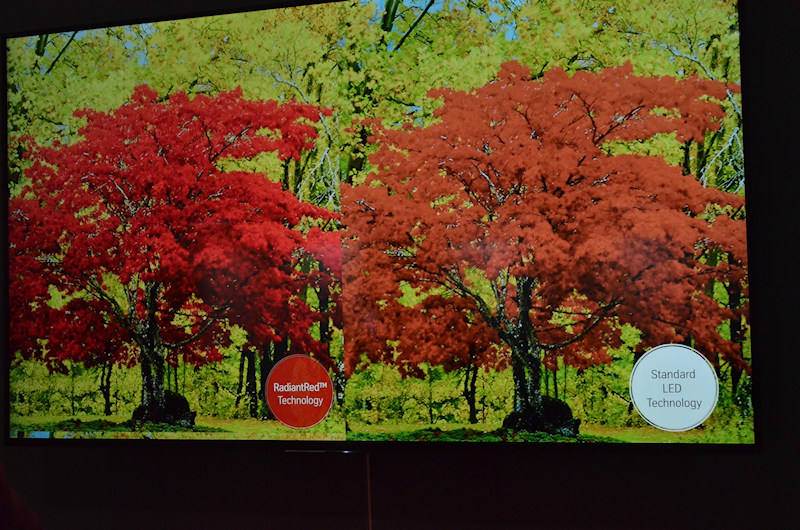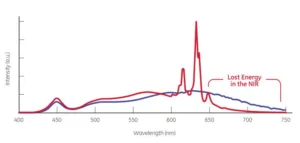In a Display Week booth, General Electric showed its RadiantRed TriGain red phosphor which is intended to be used within an LED package. The phosphor consists of Potassium Silicon Fluoride (PSF) doped with Mn4+, which produces a sharp emission centered at 631nm.
In contrast, “typical red nitride phosphors produce a broad red spectrum, resulting in a slight orange tint or significant spillage into the infrared,” says GE. Thus, according to GE, RadiantReD “produces “the truest red available in LCD displays without compromise.”
The GE RadiantRed Mn4+ doped PFS phosphor (red curve) has a considerably sharper and more intense emission spectrum than the industry-standard red nitride phosphor (blue curve). (Figure: GE)
 The result of the the Mn4+ doped PFS phosphor’s improved emission spectrum is readily visible on the screen. (Photo: Ken Werner)
The result of the the Mn4+ doped PFS phosphor’s improved emission spectrum is readily visible on the screen. (Photo: Ken Werner)
In 2014, GE licensed Nichia and Sharp to make LEDs using the phosphor for display backlighting applications, and now has more than 10 announced licensees, including Toyoda Gosei, Citizen Electronics, Everlight, Lextar, and Samsung Electronics.
And that leads to a question. Is it RandianRed that Samsung uses in the RG-enhanced LEDs found in the company’s 2017 MU line of premium LCD-TVs? (Note: It is the super-premium Q line that uses the new very impressive, Nanosys-developed quantum-dot technology.)
So I asked my go-to information source at Samsung, “Can you confirm that this is the phosphor used in the 2017 MU TV family?” His answer, after a day for trans-Pacific communication: “I was told that I am not at liberty to confirm or deny.” — Ken Werner

